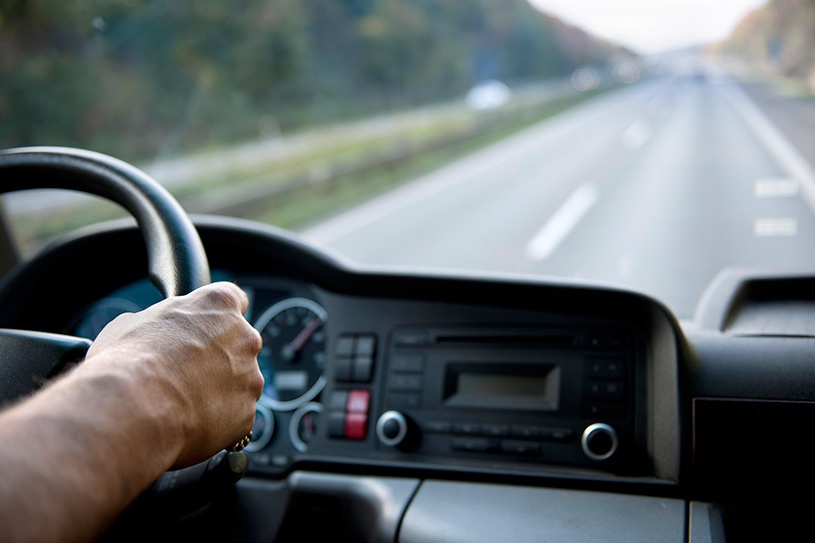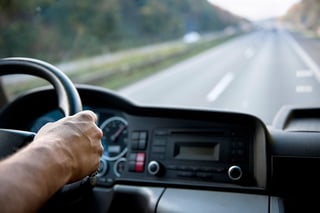Dual-Camera Video Systems

 One of the top concerns of fleet managers these days is safety and security, so an extra set of eyes—as in a dual-camera video system in vehicles—would be something that would benefit both fleet managers and drivers.
One of the top concerns of fleet managers these days is safety and security, so an extra set of eyes—as in a dual-camera video system in vehicles—would be something that would benefit both fleet managers and drivers.
A dual-camera system—one forward-facing camera focused on the road and another in the cab focused on the driver—is one of the latest technological innovations in the industry to help prevent accidents, save lives and reduce liability. They can help defend your company and your drivers in the case of an accident and can also monitor your drivers, so you get the most efficient use of your vehicles.
Large fleets, including Swift Transportation and Martin Transportation Systems, have begun testing and adopting dual-camera systems and with the positive reports they have generated, interest in the technology is most definitely on the rise.
So what’s not to love? In the case of drivers, let’s just say that some feel there’s one camera too many.
The Divisiveness of Dual-Camera Technology
The forward-facing camera is not so much a problem with drivers. It’s the one in the cab that drivers feel is intrusive and unnecessary “spyware” that invades their privacy and makes them feel micromanaged and seen as untrustworthy.
Fleet managers who have adopted the technology see it another way. They say that dual-camera systems are a necessary technology that can boost profitability and also protect the bottom line.
For example, in the case of an accident, real-time video can help exonerate companies involved in a lawsuit. The average cost—according to the Federal Motor Carriers Safety Administration—of a large truck accident is around $91,000, an accident with injuries is around $200,000 and can be as much as $3.6 million if the accident results in a fatality, so fleet managers say dual-camera systems are well worth it and vital to business operations.
Fleet managers also point out that dual cameras help decrease fraud and increase security, since the presence of cameras deters scammers and thieves. Additionally, they say that the audio and video footage helps with driver training and coaching by pointing out areas that may need improvement, which can help decrease the chances of drivers being involved in an accident and/or receiving costly traffic violations.
Putting It in Motion
How it all works is fairly simple. As the vehicle is rolling, so are the cameras, capturing video and audio and recording time and location with a GPS.
Data is collected in an onboard system that is accessible through a web portal. Alerts can be set to immediately notify selected parties of “risky” activity, such as distracted driving or signs of driver fatigue. Data can then be analyzed over time to provide an accurate and comprehensive driver snapshot that gives fleet managers greater insight and thereby, adds value.
How to Get the Driver Buy-In
To get the most from a video system, it is important to get your drivers on board sooner than later. Following are a couple of tips to help overcome their objections to what many see as a “big brother” solution that they are forced to comply with.
- Introduce Video As Early as Possible and Make Your Objectives Clear
If you spring video out of nowhere on your drivers, thenyou’re only going to get more pushback and noncompliance. The key is to be transparent and explain why you have decided to install video systems, the purpose of the systems, and the benefits you expect to gain.
The more up-front you are, the more accepting your drivers will be. Once they get on board and experience the protection video provides them, the more likely they are to become “video ambassadors” and help you sell other drivers on its benefits.
- Establish Video-Based Safety Programs
Stress to your drivers that there are two sides to a video program. There is the side that shows the areas they can improve upon, but equally as important is the one that shows what they are doing well. To that end, implement a system where drivers with the highest safety scores and/or the most improved safety scores are recognized and rewarded. It won’t take long for them to realize that the technology is there for their benefit, and they will become more accepting.
What are your thoughts on dual-camera systems in vehicles? What do your drivers think?